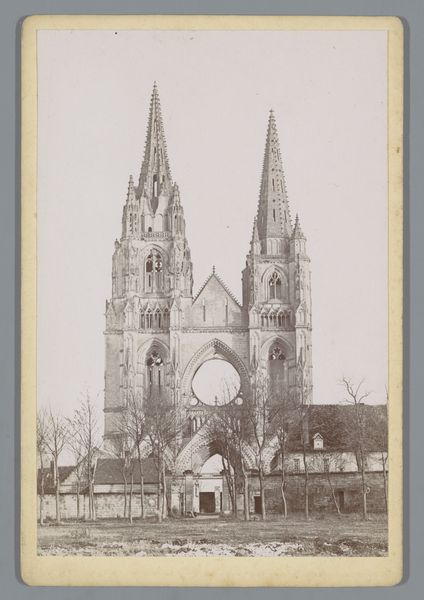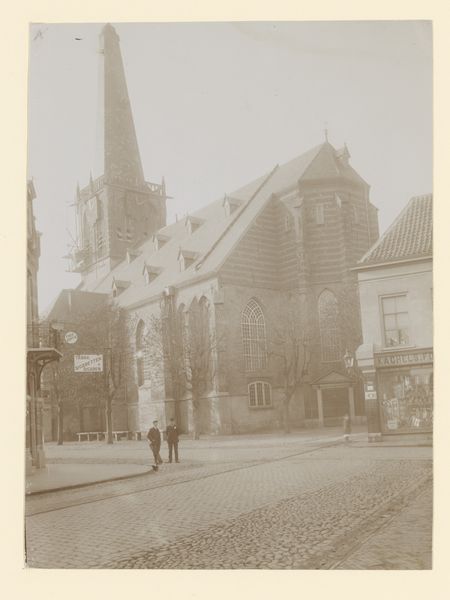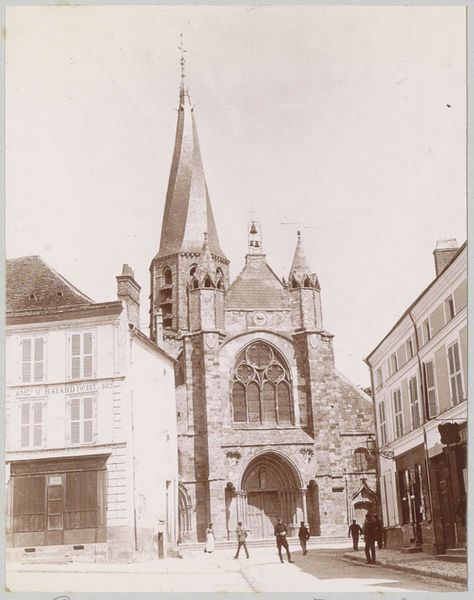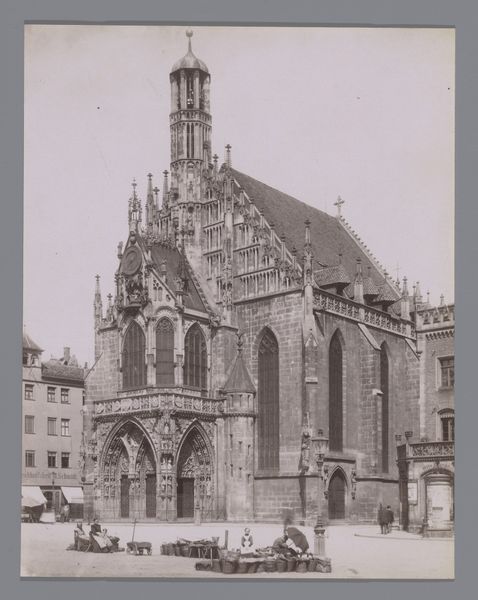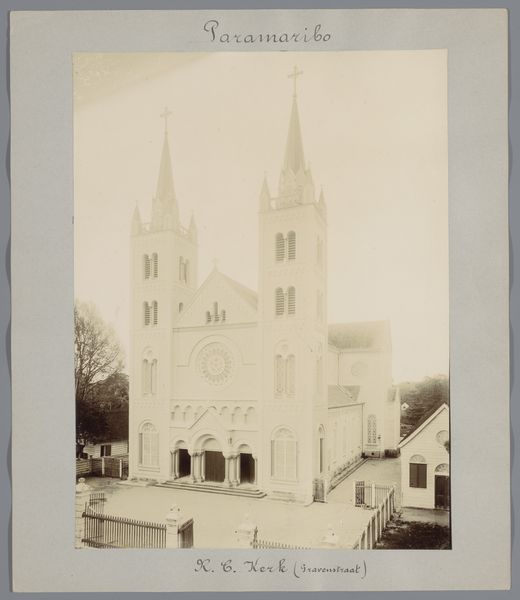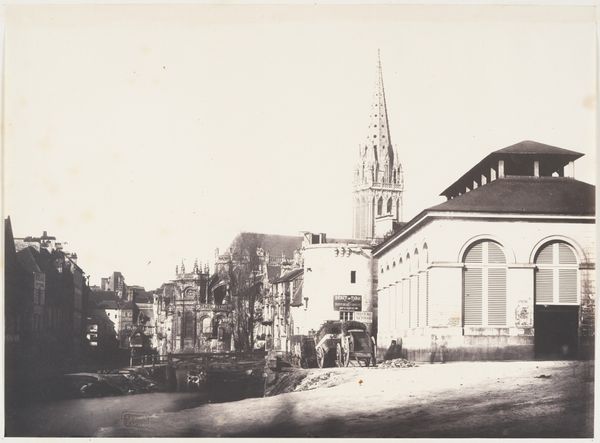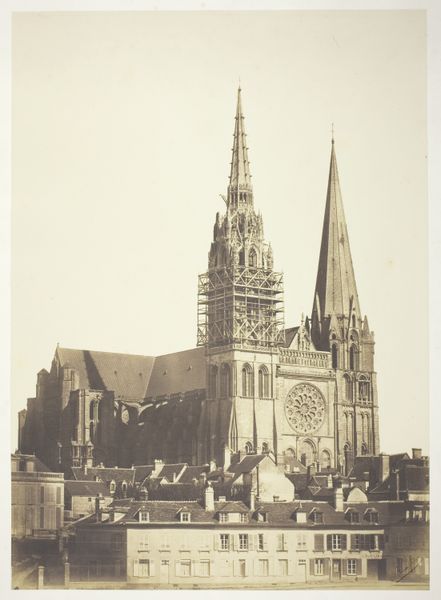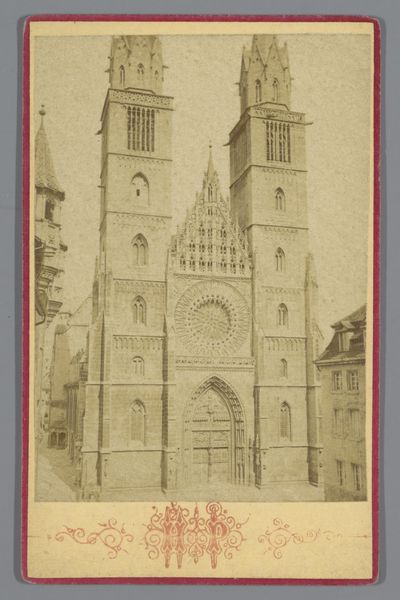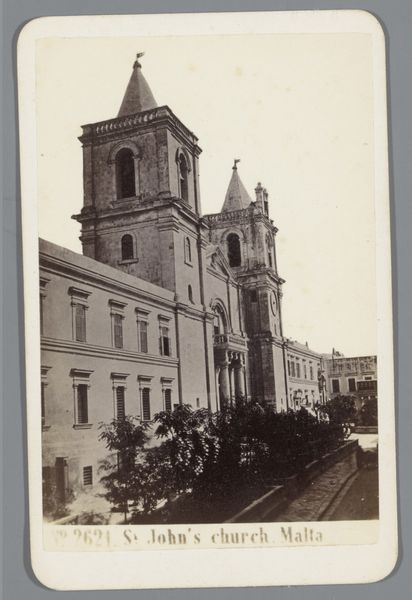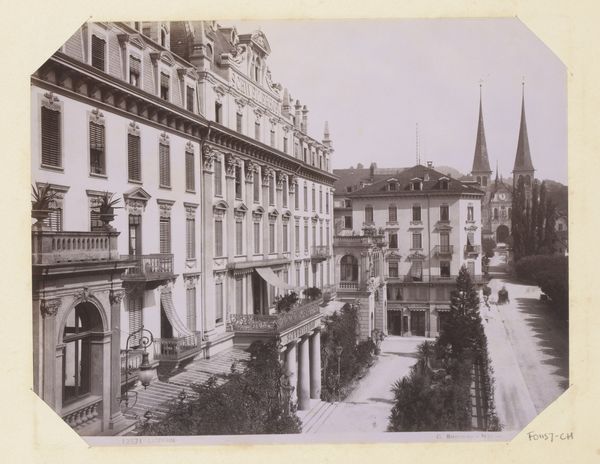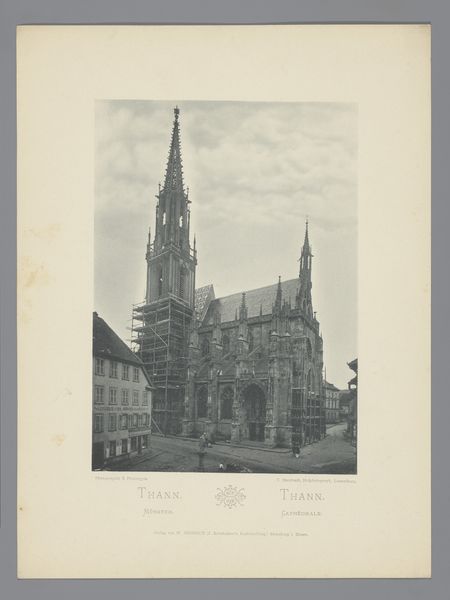
photography, gelatin-silver-print, architecture
#
landscape
#
photography
#
historical photography
#
gelatin-silver-print
#
19th century
#
cityscape
#
architecture
#
realism
#
statue
Dimensions: height 282 mm, width 225 mm, height 508 mm, width 330 mm
Copyright: Rijks Museum: Open Domain
Curator: Here we have an 1896 gelatin-silver print from Mondel & Jacob, titled "Katholische Hauptkirche", which depicts the Catholic main church in Wiesbaden, Germany. Editor: Oh, it's absolutely stunning! The starkness of the grayscale really emphasizes the cathedral's imposing presence, doesn’t it? Almost feels like looking back through a very heavy fog, something ancient surfacing. Curator: Indeed. The photographic technique used in this era allowed for capturing incredible architectural detail, focusing here on the grand scale and neo-gothic design embraced in late 19th century civic and religious buildings. The placement within its cityscape offers a subtle commentary on religion's integration with social life at the time. Editor: You know, it's strange, isn’t it? I see that striving upwards, of course—those magnificent spires aiming for something divine. But then my eye drifts down, and it's all squares and hedges, that monument trying to be an exclamation point, failing. There's this weird tension between the heavens and earth…a quiet dissatisfaction? Curator: Perhaps that reflects the broader cultural moment. This image exists in the rapidly industrializing Germany of the late 19th century. While architecture often mirrored nationalistic ambitions and religious renewal, this piece's very stillness might symbolize the internal debates and shifting values present beneath a façade of grandeur. The city itself is experiencing expansion and technological advancement; this church, captured in print, solidifies a sense of heritage amidst constant change. Editor: Change does hurt, and some buildings help keep pain manageable. Looking closely, I see how beautifully the light falls. Even the slight blur of some details gives it a dreamlike quality—or maybe it's just nostalgia coating everything. Curator: Ultimately, photography provided not just records, but also avenues through which contemporary social ideas, anxieties, and visual perspectives were distributed amongst a growing public. This specific composition allows us to see the Church within its environment, underscoring the integral connection. Editor: Thanks, now my view is refreshed: that picture is a reminder that stone, faith, and photographs survive; sometimes it is just enough.
Comments
No comments
Be the first to comment and join the conversation on the ultimate creative platform.

